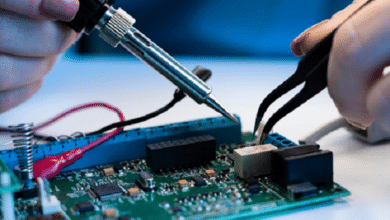How Physics Forms the Foundation of Modern Technology

Physics, the study of matter, energy, and their interactions, is the bedrock upon which all technology is built. Its principles govern the very fabric of our world, and understanding these principles is crucial for developing and utilizing the technological marvels that shape our society. Here, we explore how physics underpins various technological advancements, impacting communication, medicine, energy, and more.
Examples to Relate Physics, Technology, and Society
-
Smartphones: These ubiquitous devices rely on a multitude of physics concepts. Electromagnetism allows for wireless communication, while optics form the basis of displays and cameras. Semiconductor physics enables the miniaturization of complex circuits, leading to powerful yet compact processors.
-
Global Positioning System (GPS): This technology utilizes the principles of relativity and electromagnetism to pinpoint our location on Earth. A network of satellites transmits signals, and by measuring the time it takes for them to reach our devices, GPS receivers can determine our position with remarkable accuracy.
-
Medical Imaging: Physics plays a vital role in medical diagnostics. X-rays, CT scans, and MRIs all harness various aspects of physics to visualize the interior of the human body. X-rays use electromagnetic radiation to create images of bones, while CT scans utilize multiple X-ray images to generate detailed cross-sectional views. MRIs, on the other hand, employ strong magnetic fields and radio waves to produce detailed images of organs and soft tissues.
Interrelation of Physics and Communication Industry
The communication industry thrives on the foundation of physics. Electromagnetic waves, encompassing radio waves, microwaves, and light, carry information across vast distances. Fiber optics, utilizing the principles of light refraction, enables high-bandwidth data transmission. Understanding and manipulating these physical phenomena allows us to connect with each other instantaneously across the globe.
Interrelation of Physics and Medical Industry
Physics plays a crucial role in advancements within the medical field. Radiation therapy, a cornerstone of cancer treatment, utilizes the properties of X-rays and other forms of radiation to target and destroy cancerous cells. Medical lasers, based on principles of light amplification, have numerous applications, from performing delicate surgeries to treating vision problems. Physics also underpins the development of prosthetics and other medical devices, improving the lives of patients. how is physics related to technology?
Interrelation of Physics and Energy Industry
The quest for sustainable and efficient energy production heavily relies on physics. Nuclear power plants utilize the principles of nuclear fission to generate electricity. Solar panels, based on the photoelectric effect, convert sunlight into usable electrical energy. Understanding thermodynamics allows us to design more efficient power plants and improve energy distribution.
Conclusion
Physics is not just a theoretical science; it’s the driving force behind the technological advancements that shape our world. From communication and medicine to energy production, a deep understanding of physics unlocks possibilities and fuels innovation. As we continue to explore the vast realms of physics, we can expect even more revolutionary technologies to emerge, transforming our lives in ways we can only begin to imagine.



